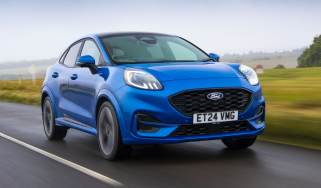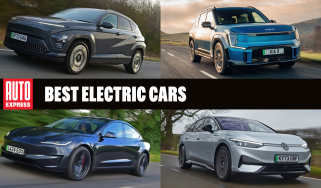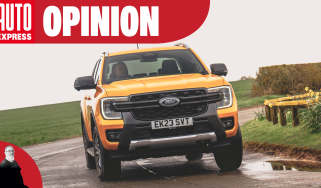Range Rover Hybrid video: Epic India expedition
We drive the Range Rover Hybrid from Jaipur to Mumbai on the last leg of an epic 10,000-mile expedition
As a result, traffic moves along to a never-ending symphony of honking. The most interesting thing is that, while it may seem like total chaos, it kind of works – somehow we made our way through the mêlée unscathed.
Only the occasional highway tollbooth halted our progress – and these told their own story about driving standards in India. Reinforced by metal scaffolding to protect their occupants, they were all thoroughly scarred from encounters with vehicles.
Yet it seemed odd paying to use roads that were so badly potholed, they looked as if they’d been shelled.
Thankfully, the Range Rover’s air-suspension took the sting out of the bumps. And its luxurious, air-conditioned cabin cocooned us from India’s humid climate – so it felt just like a regular Range Rover to drive. And while most of the braking is regenerative to charge the lithium-ion battery, the pedal never feels unnatural as it can in some hybrids. You don’t notice the electric motor cutting in and out, either.
Our only gripe was that some low-speed gear downshifts were a bit jerky. However, one of the engineers accompanying us on the expedition said a software update had already solved this issue for production models.
Day two of our journey began with a trip to a fuel station. It took 640 litres of diesel to fill the three Hybrids and four support vehicles. This cost 35000 Rupees, which is just £350 – it would have set us back about £890 in the UK.
Hopefully, we hadn’t just emptied the filling station, as a crashed fuel tanker was lying on its side a few miles up the road. How its driver managed to roll the truck in a town we’ll never know.
Another roadblock brought us to a halt as we headed out of Rajasthan and into Gujarat. But this time it was a rolling one, in the form of an elephant. The three-tonne-plus beast dwarfed the 2,349kg Range Rover Hybrid.
Moments later there was another animal encounter. A dog ran out into the road, forcing us to do an emergency stop. But one of the support vehicles didn’t stop quickly enough, and rear-ended one of the Hybrids. Turns out it was the same vehicle that had ingested water earlier in the expedition. Was that Range Rover jinxed?
Fortunately, the damage was only light and, while the convoy stopped for lunch, Land Rover’s mechanics refitted the bumper, leaving barely any sign of damage.
An hour later, more bad luck befell the same Hybrid. It hit a deep pothole at speed, cracking the offside wheels and shredding their tyres. But after a 15-minute stop at the roadside, the vehicles were moving again. The trouble was, that left the convoy with only two roadworthy spare tyres for the rest of the trip.
There was little drama for the rest of the day, until after dark when we reached a river crossing. In the traffic confusion, we became separated from the other Hybrids and ended up going the wrong way over a truck bridge, fighting our way along the tailback of lorriesheading in the opposite (and correct) direction. Being able to ignore the rules this time played to our advantage, and somehow we battled our way through the sea of queuing trucks and entered the city of Surat.
Here we experienced the worst traffic of our entire journey. Locals in their Tatas, Mahindras and Suzukis would try to bully their way into gaps between our convoy even if they didn’t exist. The Hybrid’s responsive powertrain was a real asset now. The combination of 3.0-litre V6 diesel and electric motor served up instant torque, and enabled us to stay a step ahead of the traffic.
After the night-time mayhem of Surat, the drive into Mumbai – our final destination – the next day was relatively uneventful. We even managed to avoid the city’s infamous traffic jams. The only potential problem was a glitch with the jinxed car’s electricals, although a reboot of its computer hardware soon sorted it out.
Finally, our convoy headed over the stunning Rajiv Ghandi Sea Link bridge and into the centre of Mumbai. We glanced down at our car’s trip computer to see we’d returned economy of 33mpg over the past three days – not bad considering the erratic driving conditions. Land Rover later worked out that for the entire 10,000-mile expedition, the Hybrids had averaged 36mpg.
That’s an amazing figure for an amazing expedition, proving Land Rover was right to be confident in its hi-tech SUV. And it was cause for a celebration – so it was fitting that a procession greeted us as we neared the finish at the iconic Gateway to India monument.


